Marine Science
Measuring how corals accumulate pollutants
A safer technique reveals that corals take up seawater pollutants both directly and indirectly.

KAUST marine scientists find that corals take up marine pollutants both directly from seawater and from the food they consume. © KAUST
KAUST marine scientists find that corals take up marine pollutants both directly from seawater and from the food they consume. © KAUST
Marine pollutants are taken up by corals directly from seawater as well as through accumulation in their food, shows research from KAUST that uses a state-of-the-art spectroscopy technique known as cavity ring-down spectroscopy. This is the first time the approach has been used to measure pollutant accumulation.
A hydrocarbon pollutant, phenanthrene, was monitored to see how it accumulates in coral tissue by a team formed by members from Agusti’s and Duarte’s labs at the Red Sea Research Center, collaborating with researchers at the Australian Institute of Marine Science (AIMS). Coral colonies were grown at the AIMS National Sea Simulator for a fortnight before being exposed to phenanthrene, which is often used as a model for oil pollution.
The researchers introduced phenanthrene through two routes. They fed it to microalgae that were then ingested by the corals, and they also exposed corals to phenanthrene directly in seawater. To track the uptake and accumulation of phenanthrene, they labeled it with a nonradioactive heavy isotope of carbon (13C). Then they used the spectroscopy technique to measure the amount of 13C in the coral tissues over the course of six days.
The analysis showed that the corals accumulate similar total amounts of phenanthrene, whether via diffusion from the seawater or through uptake in their food. However, the rate of uptake was faster via seawater exposure than from feeding. Ananya Ashok, the lead author of the study, explains that this finding was counterintuitive and points out that uptake is only part of the picture. “It’s not a one-way process. There’s a dynamic process of accumulation and elimination constantly happening. It’s possible that phenanthrene is being retained more from the diet even though it’s taken up at a slower rate,” she says.
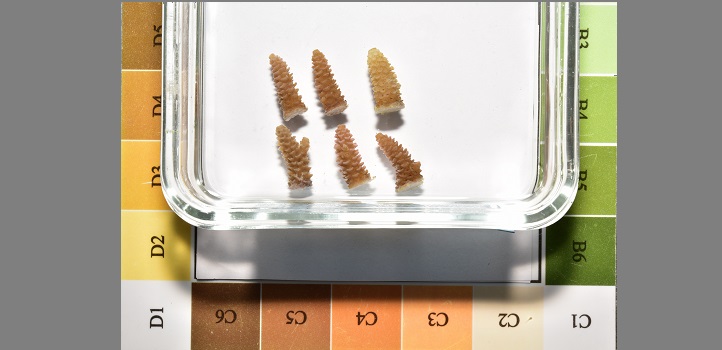
Fragments exposed to the oil pollutant, phenanthrene, are compared against the color index of a Coral Health Chart to observe for signs of bleaching distress.
© AIMS Florita Flores
Understanding the full dynamics of this process is ongoing. The team has experiments planned to investigate pollutant excretion by corals as well as the role of other players, such as copepods, in the food web. “It’s important to consider more than one route of accumulation when doing assessments and setting thresholds for these chemicals in natural environments where corals live,” says Ashok. “All of the different pathways and dynamics help to develop a more integrated regulatory picture.”
The new technique has significant advantages, Agusti explains. “It is an alternative to the use of radioactive isotopes, traditionally used to trace compounds in organisms and food webs.” Radioactive isotopes are potentially harmful to the environment. Also, their toxicity makes it challenging to correctly estimate how well marine organisms tolerate pollution. The new technique resolved these risks and makes it possible to run experiments for weeks instead of just hours.
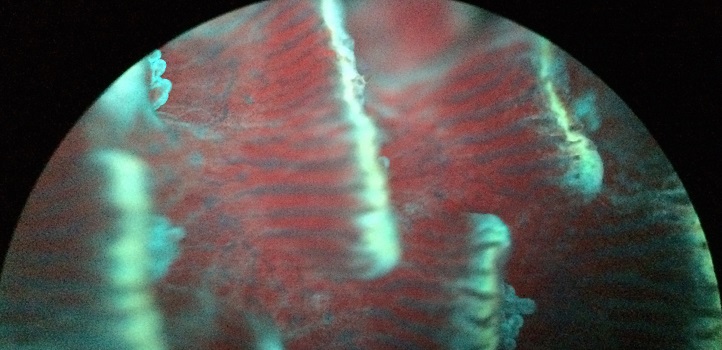
Natural fluorescence of a live coral captured under an epifluorescence microscope.
© KAUST Sreejith Kottuparambil
References
- Ashok, A., Kottuparambil, S., Høj, L., Negri, A.P., Duarte, C. & Agustí, S. Accumulation of 13C-labelled phenanthrene in phytoplankton and transfer to corals resolved using cavity ring-down spectroscopy. Ecotoxicology and Environmental Safety 196, 110511 (2020).| article
You might also like
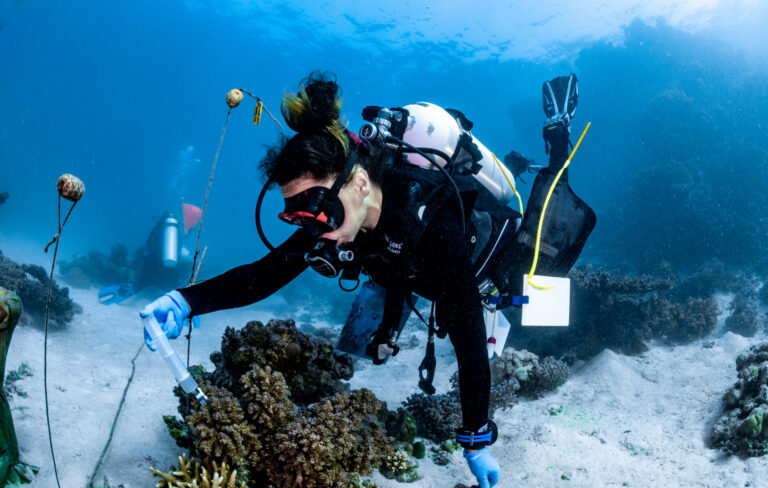
Marine Science
A place to trial hope for global reef restoration
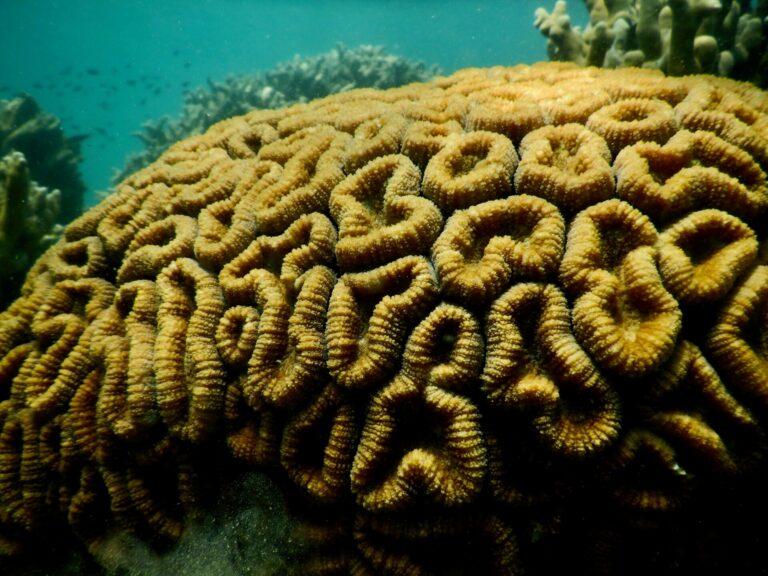
Marine Science
Reef-building coral shows signs of enhanced heat tolerance

Marine Science
Plastic-munching bacteria found across the seven seas

Marine Science
AI reveals the universal beauty of coral reef growth
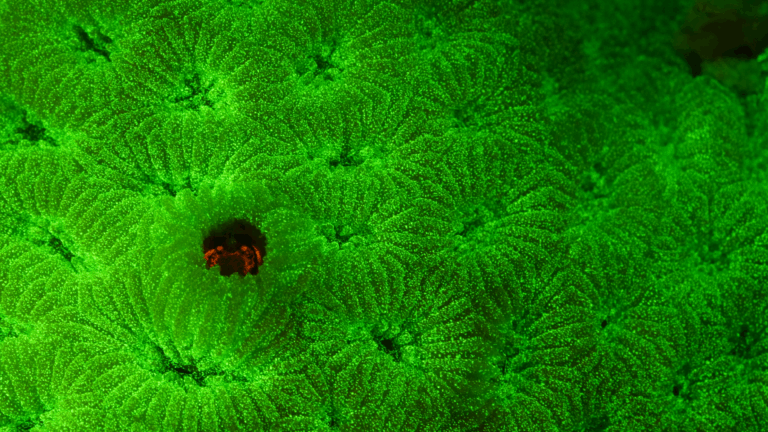
Marine Science
Tiny crabs glow to stay hidden

Marine Science
Mass fish deaths linked to extreme marine heatwave in Red Sea

Marine Science
Weeding out the secrets of Red Sea macroalgae

Bioscience




